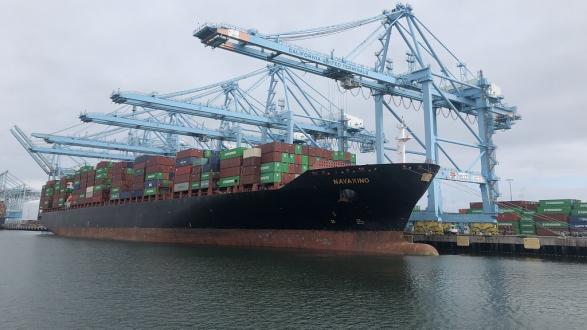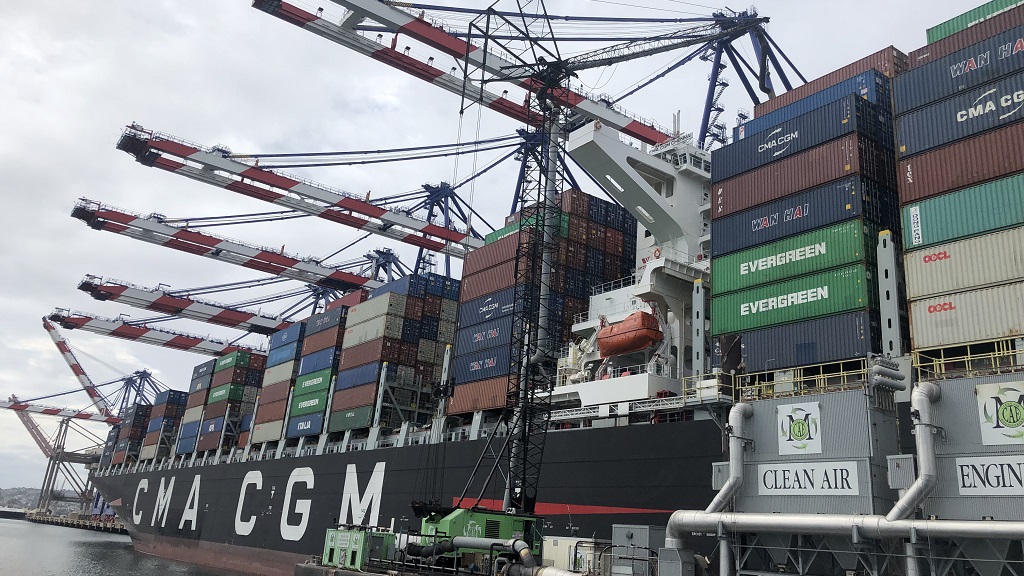A Pacific Council delegation recently visited the Port of Los Angeles in San Pedro to learn about one of the country’s premier gateways for international trade and commerce. Eugene Seroka, executive director of the Port, delivered an update detailing the effects of the U.S.-China trade war, climate change, and technological developments at the Port.
As Seroka explained, the Ports of Long Beach and Los Angeles combined represent the largest port gateway in the country. About 2,000 cargo owners use this port on an annual basis, and cargo from the port reaches all 435 congressional districts. Consequently, a significant portion of the regional workforce is directed towards maintaining port operations, with one out of nine jobs locally tied to the Port of Los Angeles alone.
Long Beach Mayor Robert Garcia and Los Angeles Mayor Eric Garcetti wrote a resolution envisioning zero emissions technology on the marine terminals landside by 2030.
Seroka expressed that the effects of the U.S.-China trade war have been devastating to the United States, but have been especially tangible at the Port. About 25 to 50 percent of imports received at the Port of LA are streamed into the manufacturing sector. Seroka also reported that export levels have plummeted for 10 consecutive months, with recyclables, heavy duty machinery, and soybeans seeing the sharpest declines. This lack of business from the agricultural sector is only compounded by the damaging effects of climate change on crop production.
“The California farmer is very important to our economy, and they’re getting decimated,” Seroka said.
What actions are happening to secure the future success of the Port? Long Beach Mayor Robert Garcia and Los Angeles Mayor Eric Garcetti wrote a resolution envisioning zero emissions technology on the marine terminals landside by 2030. Additionally, the ports of Long Beach and Los Angeles co-created the Clean Air Action Plan, which incentivizes companies to join the zero emissions campaigns with 7,500 acres of a test lab for new technologies.
In terms of enhancing security, the Port of LA recently installed a Cyber Security Operations Center, which manages all potential cyber threats. A reported 20 million cyber intrusion attempts are stopped each month.
In terms of enhancing security, the Port of LA recently installed a Cyber Security Operations Center, which manages all potential cyber threats. A reported 20 million cyber intrusion attempts are stopped each month. The Port of LA is currently working on opening a Cyber Resilience Center that will coordinate cyber-defense activity between port stakeholders. Overall, the Port emphasizes developing their information technology and cyber resilience in order to increase security and efficiency.
Finally, Seroka asked individual residents of Los Angeles to take action. In order to shape the future of tariff wars and climate change policy, he urged residents to “talk to your elected officials. Talk to the people that represent you in Washington. Make sure you amplify this voice if you have the opportunity.”
_______________________
Lindsey Bach is the Fall 2019 Programs Junior Fellow at the Pacific Council.
Learn more about Pacific Council delegations. Check out more photos from this delegation on our Flickr page.
The views and opinions expressed here are those of the speakers and do not necessarily reflect the official policy or position of the Pacific Council.






